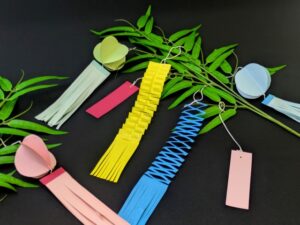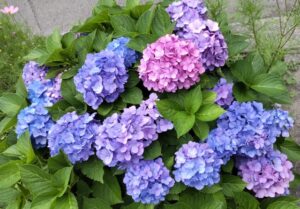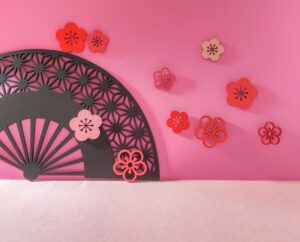When the Tanabata season arrives, many parents want to create bamboo decorations with their children. Making Tanabata decorations with origami helps develop children’s creativity while introducing them to Japanese traditional culture.
This article introduces plenty of origami Tanabata decoration ideas that children from toddlers to elementary school age can enjoy. We’ll explain everything from simple making methods to the meanings behind the decorations in detail, so even beginners can confidently take on the challenge.
Summary of Tanabata Decoration Origami Ideas
Tanabata decorations come in various types, each carrying deep meaning. To help first-time challengers feel confident, we’ll introduce everything from classic decorations to popularity rankings and age-appropriate recommendations. You’ll be able to choose based on your child’s age and interests.
Classic Tanabata Decoration Origami List
Tanabata decorations each have traditional meanings embedded within them. Here’s a summary of classic decorations that are easy to make with origami.
Star decorations carry the wish for prayers to reach heaven. When folded so that all five points come out cleanly, they finish looking like stars twinkling in the night sky. Streamers represent Orihime’s weaving threads and carry meaning for improvement in skills and arts. When made with colorful origami cut into thin strips, they sway beautifully in the wind.
Paper chains represent the importance of human connections and are perfect when you want to deepen family bonds. Lanterns have the meaning of brightening one’s heart, made with wishes for living with a bright spirit. Once you master these basic decorations, you’ll have completed proper Tanabata decorations.
Popular Tanabata Decoration Origami Rankings
We’ve compiled a ranking of Tanabata decorations actually made in nurseries, kindergartens, and homes, listed in order of popularity. Use this as reference when deciding which decorations to start with.
Here’s the ranking of popular Tanabata decorations in nurseries and kindergartens. First place goes to star decorations. They have a simple shape that even small children can make easily, and when made with sparkling origami paper, they become very gorgeous.
Second place is tanzaku (paper strips). Since you can write wishes on them, they hold special meaning for children. There’s also the joy of making tanzaku from origami and drawing pictures or writing letters with crayons or markers. Third place is paper chains, where the process of everyone cooperating to make long chains is fun and provides a sense of achievement.
Fourth place Orihime and Hikoboshi is slightly more difficult, but you can finish them with rich individuality by drawing faces and devising kimono patterns. Fifth place is the Milky Way, where the popular method involves tearing blue or light blue origami into small pieces for expression.
Age-Appropriate Origami Ideas
Choosing origami appropriate for your child’s developmental stage leads to successful experiences and confidence. By starting with manageable difficulty levels and gradually stepping up, your child’s interest in origami will continue to deepen.
Simple Origami for Toddlers
For children aged 2 to 4, simple origami suited to their fine motor development is recommended. Paper chains are perfect for first Tanabata crafts since they only require gluing strips of cut origami paper. Letting them freely choose color combinations allows your child’s personality to shine.
Torn paper Milky Way is also popular with toddlers. Simply tear blue origami into small pieces and paste them onto drawing paper to create a beautiful Milky Way. They can enjoy the tactile sensation of tearing by hand while developing concentration. Stamped star decorations allow you to create many stars by simply dipping star-shaped stamps in paint and pressing them.
No-fold tanzaku is another good idea – cut colored construction paper into rectangles and let them draw freely. Even children who can’t write yet can express their wishes through pictures.
Challenge Origami for Elementary Students
Elementary school children can take on more complex folding methods. Three-dimensional star decorations are authentic decorations made by combining five parts. The sense of achievement when completed is exceptional, and they’ll want to show off to friends with such beautiful results.
Orihime and Hikoboshi dolls are made by carefully folding detailed parts like faces and kimono. Drawing expressions and using chiyogami paper to express kimono patterns creates works full of originality. Kusudama decorations require advanced techniques of making multiple identical parts and combining them, but when completed they become gorgeous decorations.
Tanabata version origami cranes are also recommended – fold cranes with colorful origami and hang tanzaku with written wishes around their necks. Since cranes are also symbols of longevity and good fortune, you can imbue them with special meaning.
How to Easily Make Tanabata Decorations with Origami
Now let’s actually make Tanabata decorations. Here we’ll carefully explain step-by-step from preparing necessary materials to detailed making methods for representative decorations. We’ll also introduce tips for success so even beginners can work with confidence.
Basic Materials and Preparation
The materials needed for Tanabata decoration origami are very simple. Prepare colorful origami paper. In addition to the standard 15cm×15cm size, having 7.5cm×7.5cm small sizes is convenient when making detailed decorations. Gold and silver sparkling origami paper makes star decorations particularly beautiful.
Glue and cellophane tape are used when assembling decorations. Since liquid glue takes time to dry, glue sticks are easier for small children to use. Scissors are necessary for detailed cutting, but when children use them, choose safe ones with rounded tips.
Markers and crayons allow you to write wishes on tanzaku and draw patterns on decorations. String (kite string or yarn) is used when hanging decorations on bamboo. Natural colors like white or beige will complement the colorful decorations nicely.
Step-by-Step Instructions for Making Origami Tanabata Decorations
From here, we’ll introduce detailed making methods for four popular Tanabata decorations. All can be made with basic techniques, so please enjoy trying them with your children.
How to Make Star Decorations
Star decorations are representative Tanabata decorations. Fold square origami into a triangle, then fold in half again to make a small triangle. Make angled cuts with scissors, and when opened, you get a beautiful star shape.
First fold the origami diagonally into a triangle, then fold into a triangle once more. Place with the pointed corner up, and make a diagonal cut with scissors about one-third from the bottom. When opening, slowly and carefully unfold to create a star with five clean points. Made with gold or yellow origami, they look like real twinkling stars.
How to Make Streamers
Streamers are beautiful decorations representing Orihime’s weaving threads. Prepare rectangular origami and make fine vertical cuts, leaving about 3cm at the top. Make cuts about 5mm wide at equal intervals.
Glue together the uncut top section to form a tube. Let the cut section hang naturally so it sways in the wind. Making them in multiple colors like red, blue, yellow, and green and arranging them together creates very colorful and beautiful decorations.
How to Make Paper Chains
Paper chains represent connections with family and friends, carrying warm meaning. Cut origami into thin strips (about 2cm×15cm), make rings and glue them together. Thread the next ring through the previous one before gluing to create a chain-like connection.
Enjoy your preferred color scheme by arranging colors in a decided order or combining them randomly. The longer you make them, the more gorgeous they become, so it creates good memories when the whole family cooperates to make them.
How to Make Lanterns
Lanterns are decorations with the meaning of brightening one’s heart. Fold origami in half and make vertical cuts at equal intervals from the fold to about 1cm from the edge. Cuts should be about 1cm wide, with 8-10 cuts as a guideline.
Open the origami and glue the short edges together to form a tube. Gently push to shape it into the rounded form characteristic of lanterns. Adding thin paper handles at the top and bottom creates a more authentic lantern finish.
Tips for Beginners to Avoid Failure
Since you’re taking time to make them, you want them to turn out beautifully. Here we’ve compiled practical tips and common stumbling points for beginners to help avoid them.
Here are tips to avoid failure when making origami Tanabata decorations. First, make firm creases – this is essential. Press firmly with your nail to create clean creases, which will make the finished product much more beautiful.
Be careful when using scissors. Especially when making cuts for star decorations, be careful not to cut too deep at once. Cut little by little while checking to reduce mistakes.
Use appropriate amounts of glue – too much will cause the paper to wrinkle, too little won’t provide sufficient adhesion. With glue sticks, one light application is usually enough. When making with children, have adults demonstrate first before they try, which helps things go smoothly.
Enjoying Tanabata Decoration Origami Crafts with Children
Making Tanabata decorations goes beyond simple crafts – it’s precious time for deepening parent-child communication. We’ll share key points for safely and enjoyably fostering children’s creativity. Please also refer to methods for use in nurseries and kindergartens.
Points for Parent-Child Enjoyment
When making Tanabata decorations with children, matching your child’s pace is most important. Rather than seeking perfect results, enjoy the process of creating together. Help appropriately while proceeding so children can feel “I did it!”
Role division can enhance children’s sense of achievement. For example, adults handle cutting with scissors while children handle gluing. Giving lots of praise will continuously boost children’s creative motivation.
Specific praise like “That’s a beautiful color” or “You glued that so well” is key. Also, explaining the origins of Tanabata and meanings of decorations simply while creating enriches children’s knowledge and makes the time more meaningful.
Ideas for Use in Nurseries and Kindergartens
In educational settings, group activities can foster children’s cooperation and sense of achievement. Create optimal activity plans according to class size and age composition.
For Tanabata crafts in nurseries and kindergartens, adjusting difficulty by age is important. For 0-1 year old classes, having them participate by stamping handprints or footprints on decorations made by adults is recommended. Sticker activities allow even small children to participate enjoyably.
For 2-3 year old classes, torn paper Milky Way creation is popular. Have them tear blue origami into small pieces and freely paste them on drawing paper. 4-5 year old classes can challenge paper chains using scissors or simple star decorations.
Large decorations made through everyone’s cooperation include ideas like the whole class making long paper chains or each person making one star to represent a large Milky Way. When the completed works are displayed in the classroom, you’ll see children’s proud expressions.
Safety Precautions for Enjoyable Activities
When working with children, ensuring safety alongside enjoyment is paramount. Create an environment where creative activities can be undertaken with peace of mind through advance preparation and appropriate supervision.
Safety considerations are essential when doing origami crafts with children. For scissors use, age-appropriate guidance is necessary. For children 3 and under, adults should do the cutting; for 4-5 year olds, use safe scissors with constant adult supervision.
Be careful about choking hazards from small parts. When using decorative items like beads or buttons, constantly watch that children don’t put them in their mouths. For glue handling, be prepared to immediately wash with water when children get it on their hands or clothes.
Securing adequate workspace is also an important point. Working in a sufficiently spacious, bright location allows children to focus safely. Also, limiting work sessions to 15-30 minutes is important to prevent children from getting tired.
Meanings and Origins Behind Tanabata Decoration Origami
Tanabata decorations have deep meanings embedded in each one, beyond just visual beauty. It’s also a good opportunity to share Japanese traditional culture with children, so let’s learn about the meanings of decorations and Tanabata’s history. Creating them with heartfelt intention makes them even more special.
Types and Meanings of Tanabata Decorations
Traditional Tanabata decorations each contain people’s wishes. Here we’ll explain the meanings of representative decorations still cherished today in terms children can understand.
Meaning of Tanzaku
Tanzaku is one of the most beloved Tanabata decorations. Its origins trace back to Heian period customs of wishing for improvement in learning and calligraphy. In those days, people ground ink with night dew collected on taro leaves and wrote waka poems on catalpa leaves with their wishes.
Today we write various wishes on colorful tanzaku, but the colors actually each have meaning. Red represents gratitude, blue represents wishes for growth, yellow represents improvement in human relationships, white represents orderly living, and black (purple) represents academic achievement. When choosing colors with children, it’s good to teach them these meanings.
Meaning of Net Decorations
Net decorations represent fishing nets and carry meanings of wishing for good catches and abundant harvests. You fold origami, make fine cuts, and when opened, beautiful net patterns appear. The mesh is also said to have the meaning of warding off evil things.
The making method is relatively simple – fold square origami into a triangle, then fold in half again to make a small triangle. Make diagonal cuts at equal intervals and when opened, continuous diamond-shaped net patterns appear. Made with blue or green origami, they finish with an authentic fishing net atmosphere.
Meaning of Shell Decorations
Shell decorations shaped like bivalves symbolize marital harmony and family bonds. Since two shells fit together perfectly, they’re said to represent loving couples like Orihime and Hikoboshi. Also, since shells represent sea bounty, wishes for prosperity are embedded in them.
Bivalves like clams have the characteristic that only paired shells fit together perfectly. This nature gave birth to shell matching games in the Heian period and has been cherished as a symbol of deep marital bonds. It’s good to have children make them with feelings of “may we be a harmonious family.”
History and Tradition of Tanabata
Learning how Tanabata came to its current form allows us to share the richness of Japanese culture with children. We want to pass on this beautiful tradition that has continued since ancient times to the next generation.
Tanabata’s origins trace back to the Chinese legend of the weaver girl and the cowherd. The weaver girl (Orihime), daughter of the Emperor of Heaven, fell in love with the cowherd (Hikoboshi), and they began neglecting their work. The Emperor separated them, but once a year, magpies spread their wings to form a bridge, allowing the two to cross the Milky Way and meet in this romantic story.
This legend was introduced to Japan during the Nara period and was cherished among nobles as an event called **Kikoden (Begging for Skills Festival)**. During the Heian period, it spread among commoners and merged with the Japanese indigenous Tanabata weaver legend to create the current form of Tanabata.
During the Edo period, the custom of hanging tanzaku and decorations on bamboo became established. Bamboo was chosen as a sacred plant that wards off evil and carries wishes to heaven because it grows quickly and straight.
Tanabata Trivia to Share with Children
Here are interesting Tanabata stories that stimulate children’s curiosity. Even complex content can be shared enjoyably with some creativity.
When sharing Tanabata’s fun with children, explain in easy-to-understand words. Telling it as a story like “Long, long ago, there was Orihime-sama and Hikoboshi-sama in the sky, and they could only meet once a year” will capture their interest.
The connection to constellations is also interesting trivia. Orihime is the star Vega in the constellation Lyra, and Hikoboshi is Altair in Aquila, which can actually be seen in the summer night sky. The Milky Way is our galaxy seen from the side. Looking up at the night sky with children to find the actual stars would be a wonderful experience.
Tanabata around the world also has interesting stories. In China it’s beloved as “Qixi Festival,” in Korea as “Chilseok,” each with unique customs. Even within Japan there are regional differences, such as Sendai’s Tanabata festival being held in August – teach children according to their interests.
Tips for Displaying Tanabata Origami Decorations Stylishly
Carefully made Tanabata decorations become even more attractive depending on how they’re displayed. We’ll introduce ideas for stylish decoration that can also be enjoyed as room interior. Please also refer to tips for taking Instagram-worthy photos.
Display Variations
To make Tanabata decorations look more beautiful, well-balanced arrangement is important. Alternating large and small decorations or grouping the same types of decorations together creates a well-contrasted finish. By also considering color combinations and appropriately mixing warm and cool colors, you can create visually beautiful displays.
Creating height differences is also an important point for adding dimension. Change string lengths to vary decoration positions. Combining short and long decorations makes the movement when swaying in the wind more beautiful. Also, incorporating LED lights allows you to enjoy a magical atmosphere even at night.
Ideas for Displaying on Bamboo or Wall Surfaces
Even in limited spaces, you can enjoy wonderful Tanabata decorations with some creativity. Find the optimal display method for your living environment.
When real bamboo isn’t available, you can substitute with artificial bamboo or branches. Placing eucalyptus or olive branches in a vase and hanging Tanabata decorations creates stylish interior decor. For wall displays, you can create bamboo shapes with masking tape and attach origami decorations on top.
Hanging from the ceiling is also a popular display method. By hanging strings from multiple ceiling points, each with different decorations, the entire room takes on a Tanabata mood. The garland style of arranging decorations in a horizontal line and attaching them to the wall works even in narrow spaces.
Points for Photogenic Display
Here are tips for taking beautiful photos that will remain as memories. Let’s preserve beautiful photographs as records of children’s growth and precious family memories.
To create Instagram-worthy Tanabata decorations, paying attention to the background is important. Using white walls or blue sky as a backdrop allows colorful decorations to stand out beautifully for gorgeous photos. Natural light helps express the texture and colors of origami more beautifully.
When photographing with people, have children hold decorations or pose in front of them. For close-up photos, capture details of decorations clearly; for wide shots, convey the overall atmosphere. We recommend shooting from multiple angles.
Photographing not just finished decorations but also the creation process makes photos more memorable when looking back later. Children working seriously on origami and their happy expressions when finished also become precious records.
Common Questions and Solutions for Tanabata Origami Decorations
When actually making Tanabata decorations, you may encounter various questions and difficult situations. We’ve compiled common questions and their solutions for reference when troubles arise. Knowing these beforehand allows for smooth creation progress.
Substitute Ideas When Materials Run Short
When you run out of origami paper, you can utilize wrapping paper or magazine pages. Cutting candy wrappers or beautiful magazine pages into squares creates unique decorations. Newspaper also produces interesting effects with its distinctive black and white texture.
When there’s no glue, you can substitute with staplers or cellophane tape. However, consider safety when small children handle them. When there’s no string, you can use yarn, sewing thread, or even connect rubber bands. When there are no scissors, adapt to decorations made by tearing by hand.
What to Do When Origami Won’t Fold Properly
When origami doesn’t go well, it’s important to identify the cause and address it. Let’s check each issue one by one and solve the problems.
Most causes of origami not folding well relate to paper type. Paper that’s too thick or too thin is difficult to fold, so we recommend using standard origami paper. Humidity is also an enemy – damp paper tears easily, so work in a dry environment.
Making firm creases is also important. Press firmly with your nail to create clean fold lines. For children, it’s good for adults to guide their hands while folding together. When challenging complex decorations, we recommend trying several times with practice paper before using the final paper.
Ways to Make Decorations More Durable
Here are maintenance methods to enjoy your carefully made decorations for a long time. With small touches, you can extend the decorations’ lifespan.
To make Tanabata decorations last longer, material selection is important. Using slightly thicker origami paper or reinforcing thin origami by backing it with washi paper works well. Adhesive areas become stronger by using both glue and cellophane tape together.
Displaying in areas with less wind exposure is also important. Avoid places where air conditioning hits directly or high-traffic areas. Consider decoration weight and use thicker string for heavy decorations. Also, as regular maintenance, we recommend checking string condition and adhesive areas a few days after hanging.
Common Trouble Q&A
We’ve compiled common troubles that occur during actual creation and their solutions in Q&A format. Use this as reference when you’re stuck.
- The origami paper tore
-
Small tears can be repaired with cellophane tape from the back. For large tears, either incorporate that part as a pattern or remake with new paper.
- The glue won’t dry and decorations come off
-
On humid days glue dries slowly, so use a hair dryer’s cool setting for drying. In urgent cases, temporarily secure with cellophane tape before proper glue adhesion.
- Children get bored
-
Aim to complete one decoration in 15-20 minutes. Take breaks while progressing according to your child’s concentration span. Display completed work immediately to let them feel accomplished.
Making Tanabata origami decorations is also precious communication time with children. Rather than seeking perfection, cherish the joy of creating together and make wonderful Tanabata memories.
Summary
The key points of this article are as follows:
- Star decorations, streamers, paper chains, and lanterns are classic Tanabata decorations
- Adjusting difficulty according to age is key to success
- Each Tanabata decoration carries deep meaning
- Safety-conscious material selection and supervision are important
- Creative display methods lead to photogenic results
- Troubles can be handled with substitutes and repair methods
Making Tanabata origami decorations is a wonderful opportunity to share Japan’s beautiful traditional culture with children. Using the ideas introduced in this article as reference, please spend a special Tanabata with decorations made with your whole family’s heartfelt care. Each year will bring new discoveries and joy as children grow, making Tanabata increasingly memorable.










Comments